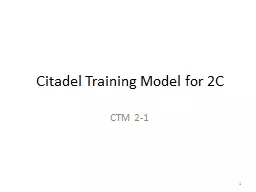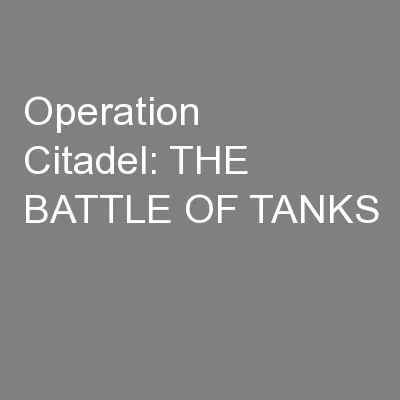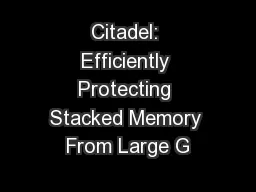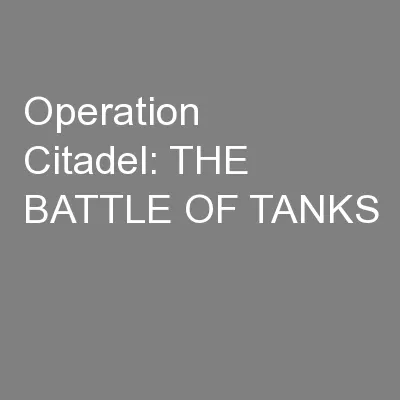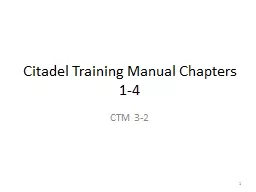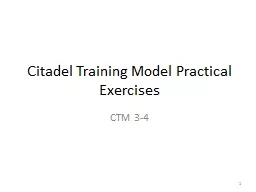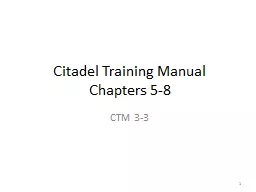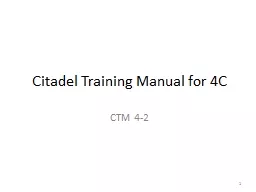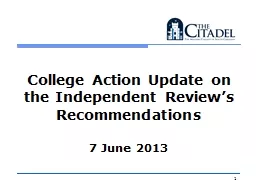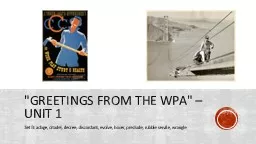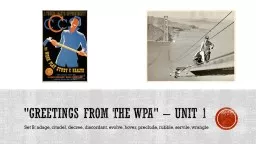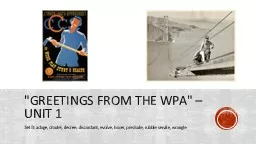PPT-Citadel Training Model for 2C
Author : stefany-barnette | Published Date : 2017-03-20
CTM 21 1 Training Objective Task Understand how to apply the CTM as a secondclass cadet Condition Given a block of instruction that includes a review and two
Presentation Embed Code
Download Presentation
Download Presentation The PPT/PDF document "Citadel Training Model for 2C" is the property of its rightful owner. Permission is granted to download and print the materials on this website for personal, non-commercial use only, and to display it on your personal computer provided you do not modify the materials and that you retain all copyright notices contained in the materials. By downloading content from our website, you accept the terms of this agreement.
Citadel Training Model for 2C: Transcript
Download Rules Of Document
"Citadel Training Model for 2C"The content belongs to its owner. You may download and print it for personal use, without modification, and keep all copyright notices. By downloading, you agree to these terms.
Related Documents

